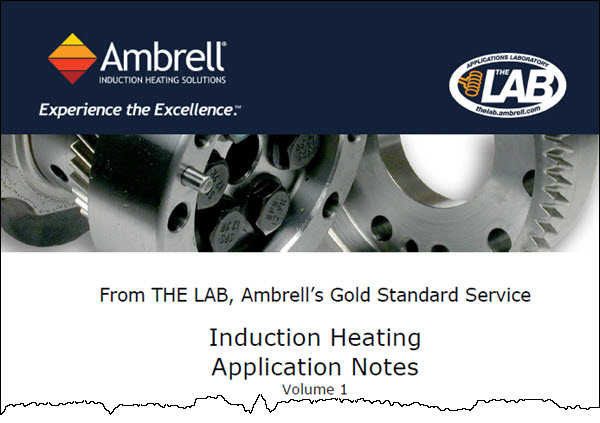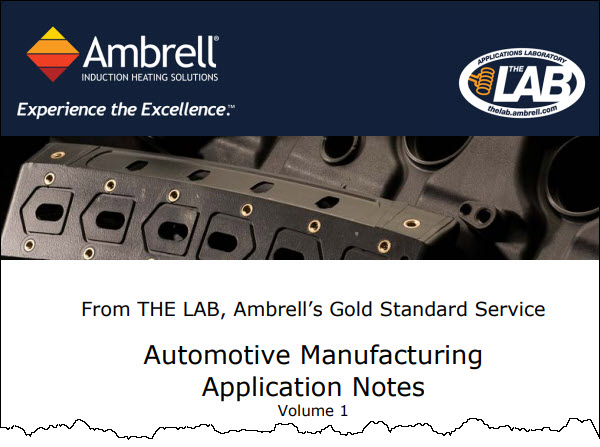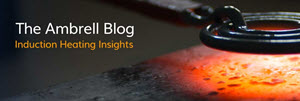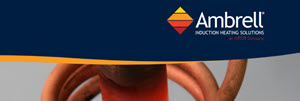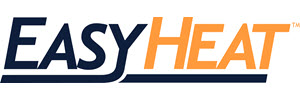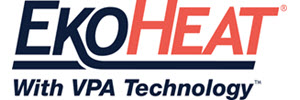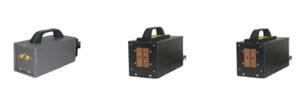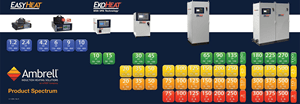Other Induction Heating Processes
Other Induction heating processes
- Home
- Applications
- Heating (Others)
What Are Some Other Induction Heating Processes?
Many other heating processes make use of the unique benefits induction delivers. Among them:
coating removal
weld preheating
wire heating
cap sealing
hot forming
Induction generates an electromagnetic field in a work coil that induces currents in the conductive material of your workpiece when placed within or near the coil. Friction from these currents elevates the temperature of your workpiece.
Benefits of induction for other processes
Many other application notes from our lab demonstrating the use of induction heating in preheating, tube heating, and other copper, steel, aluminum, and titanium materials. Induction heating delivers precise, localized heat, increases production rates with faster heating cycles and reduces defect rates with repeatable, reliable heating, eliminating variability from part to part, while maintaining metallurgical characteristics of the individual metals.
Free Induction heating Application Notes
Select from our collection of heating notes, taken from years supporting our customers. Read how we helped to solve their process heating challenges.
 Heating Copper Parts for a Burn-Off Application
Heating Copper Parts for a Burn-Off Application
To heat copper parts, which are battery lugs, for a burn-off application.
 Preheating Steel Tubes Prior to Bonding
Preheating Steel Tubes Prior to Bonding
To heat steels tubes for a bonding application; the end product is a bushing for large trucks. Induction would replace an oven for this client.
 Heating a Copper Wire for Coating Removal
Heating a Copper Wire for Coating Removal
A custom-designed multiple turn helical coil was built to generate the required heating for this coating removal application.
 Heating a Steel Pan to Evaporate Water
Heating a Steel Pan to Evaporate Water
A multiple turn pancake coil was designed to provide heat to the base of the steel pan. Initial tests were conducted to optimize the power delivered to the part and to understand the heating patterns
 Heating Stainless Steel Assemblies to Remove Glass
Heating Stainless Steel Assemblies to Remove Glass
A custom-designed single position multiple-turn helical coil was built to generate the required heating for the application. Initial tests were conducted to optimize the power delivered to the part.
 Heating Steel Assemblies for Sealing
Heating Steel Assemblies for Sealing
A single position multiple-turn pancake shaped coil was built to generate the required heating for the application. Initial tests were conducted to optimize the power delivered to the part.
 Heating a Flanged Part Before Welding
Heating a Flanged Part Before Welding
A custom-designed single position multiple-turn oval coil was built to generate the required heating for the preheating application. Initially, a helical coil design was used which did heat the part faster, but the pattern wasn’t uniform.
 Heating a Steel Susceptor for Glass Cutting
Heating a Steel Susceptor for Glass Cutting
A custom-designed single position multiple-turn helical coil was built to generate the required heating for the application. Initial tests were conducted to optimize the power delivered to the part.
 Heating Non-Magnetic Steel Tubing
Heating Non-Magnetic Steel Tubing
To heat non-magnetic steel tubing for an application in the energy storage market.
 Heating Surgical Tools for Coating Burn Off
Heating Surgical Tools for Coating Burn Off
To heat surgical tools to burn-off the nylon coating; the client had been using a torch for this application. Within seconds of the power being turned on, the coating on the tool began to smoke and soon started to bubble.
 Heating Steel Cutting Tools for Carbide Removal
Heating Steel Cutting Tools for Carbide Removal
Using induction to heat magnetic steel cutting tools for removal of carbide cutting tips. Induction efficiently and precisely heats the client's part in a controlled manner delivering only the required heat.
 Heating Steel Coated Copper Wire
Heating Steel Coated Copper Wire
In static tests, it was observed that it took 2.5 seconds to heat an 11” (279 mm) length of sample wire to target temperature.
 Heating Steel Shafts for Forming (Medical Tools)
Heating Steel Shafts for Forming (Medical Tools)
A custom-designed single position multiple-turn helical coil was built to generate the required heating for this application.
A custom-designed single position multiple-turn pancake coil was built to generate the required heating for this application.
 Heating Steel Pipe for a Casting System
Heating Steel Pipe for a Casting System
The client wants to replace their resistive steel pipe heating process; it takes 15 minutes to reach the desired temperature.
Induction dramatically reduced the heating time they saw with torch heating as it dropped from 20 minutes to 3 minutes
 Heating Steel Knives; Food Processing
Heating Steel Knives; Food Processing
To rapidly heat steel knives on the line of a food processing facility, improving efficiency; the client had been using a different heating method.
 Drying Steel Rings with Induction Heating
Drying Steel Rings with Induction Heating
To heat streel rings for a drying application; the client was using hot air but it wasn’t completely drying the rings
 Preheating Rod Assemblies for Welding
Preheating Rod Assemblies for Welding
The client had been using torches for preheating. However, due to process improvements thanks to new automation in their facility, torch heating became too slow. This resulted in a backlog that kept them from maximizing their throughput.
 Induction Preheating Steel Laminate Parts
Induction Preheating Steel Laminate Parts
The c-lams are inserts for an automotive industry application. In production the robotic pick-and-place will occur for plastic overmolding after heating by induction.
 Heating Busbars for Coating Release
Heating Busbars for Coating Release
Induction’s precision heating enables the part to heat to the exact targeted temperature, which prevented melting of the tin-coated copper part
 Heating Automotive Battery Cables for Adhesive Melting
Heating Automotive Battery Cables for Adhesive Melting
Temperature indicating paint was applied to the parts, and it took 10 seconds to heat the various styles of the part to the targeted temperature. This testing achieved the client's time and quality objectives.
 Heating Lighting Tubes for Getter Firing
Heating Lighting Tubes for Getter Firing
The getter firing application was complete within just 10 seconds. Induction delivers the same result time after time, making it ideal for their high-volume manufacturing process
 Heating Wires and Strips for Coating Removal
Heating Wires and Strips for Coating Removal
The polymer coating on the aluminum strip behaved differently when heated. Visually, the coating turned brown and bubbly when the aluminum strip was heated
 Heating an Aluminum Tube for Bending
Heating an Aluminum Tube for Bending
Induction does not present an open flame into the work environment like a torch, resulting in a safer working environment
 Heat a Fixture for a Wire Heating Application
Heat a Fixture for a Wire Heating Application
Heat a non-magnetic metal alloy shape-setting fixture for a Nitinol wire heating/shaping application.
 Heating a Tube Prior to Swaging
Heating a Tube Prior to Swaging
With the process designed by Ambrell's applications engineers, the tubing heated to temperature within five seconds. This result met the client's objective
 Preheating a titanium alloy wire prior to welding
Preheating a titanium alloy wire prior to welding
With an EKOHEAT 10 kW power supply, the titanium alloy wire can be heated to 2732 °F (1500 °C) in three seconds. This testing configuration simulates using three EASYHEAT 10 kW power supplies in series.
 Heating a cutting knife, improving cut
Heating a cutting knife, improving cut
In this example, induction heating provides consistent, repeatable results, a safe, reliable source of heat, measurable & stable results and less production scrap
 Preheating a magnetic steel die
Preheating a magnetic steel die
The induction process required 10 minutes to heat to the required temperature; the client's resistance heater took more than ten minutes. Also there will no longer be a need to open the chamber to remove the heater.
 Heating aluminum wire to create screens
Heating aluminum wire to create screens
Induction will double production due to more rapid heating than infrared lamps can offer; with induction 100 feet per minute can be run instead of 50 feet per minute with infrared
 Heating rods for thread rolling to create fasteners
Heating rods for thread rolling to create fasteners
This is part of an automated line. The system was sized and the coil was designed to ensure 45 parts per minute can be heated to the temperature required for hot forming.
 Induction heating stainless steel inserts for an insertion application
Induction heating stainless steel inserts for an insertion application
Induction heating offers dramatically faster heating compared to ultrasonics which means dramatically increased production rates. Induction is highly repeatable and easy-to-integrate into manufacturing processes.
 Hot forming a steel pipe with induction
Hot forming a steel pipe with induction
A 2.5 inch steel pipe is heated by induction to the targeted temperature quickly with induction's repeatable process. EKOHEAT is easy to integrate into manufacturing processes and targets only the portion of the tube that requires bending while not heating the remainder of the tube.
 Induction heating a steel grenade for a disposing application
Induction heating a steel grenade for a disposing application
The grenade was then placed inside the coil and power was turned on. After just two seconds the painted indicated, meaning the part achieved 800 °F (427 °C).
 Tempering an audio speaker screen
Tempering an audio speaker screen
The speaker screen was placed over the induction coil and the power was turned on. The screen heated to the desired temperature within just one second
 Heating an aluminum-backed circuit board to reflow solder
Heating an aluminum-backed circuit board to reflow solder
Given the significantly faster heating time, induction improves throughput in this process and is a more efficient heating method than hot plate heating
 Heating a Kovar tube for a glass sealing application
Heating a Kovar tube for a glass sealing application
The client was using a torch, and operator error was slowing the heating. The repeatability of induction enables improved throughput while in this process it is a more efficient heating method than torch heating, also reducing scrap
 Heating a chromel grid for an oxidization application
Heating a chromel grid for an oxidization application
Induction delivers a dramatic reduction in heating time, enabling a significant increase in production while providing a more energy-efficient heating method than furnace heating
 Heating fluid passing through an alumina tube
Heating fluid passing through an alumina tube
To heat an alumina tube to heat magnetic particles in order to heat fluid passing through the tube for an oil industry application
 Heating the joint area of two lead plates for a butt welding application
Heating the joint area of two lead plates for a butt welding application
The client was using a torch, which took five minutes; induction takes just one minute, which means an improved production rate and, unlike a torch, induction heating is precise and repeatable...
 Induction heating cylinder liners for insertion into aluminum engine blocks
Induction heating cylinder liners for insertion into aluminum engine blocks
Temperature indicating paint was applied to the steel part for testing purposes. The part was then placed into the induction heating coil and the power was turned on. In just under 30 seconds, the part achieved temperature.
 Heating stainless steel finned parts
Heating stainless steel finned parts
Induction is a targeted, precise heating method with instant on/off, saving users energy and it is a flameless heating method, so it provides employees with a cooler, lower-risk working environment...
 Heating a coated copper wire for a stripping application
Heating a coated copper wire for a stripping application
The top 1 (25 mm) portion of the plastic coated wire was placed inside the helical coil and heating began. The top turn rapidly started to heat and the plastic melted after about 10 seconds of heating...
 Heating a copper end cap to temperature to melt wax
Heating a copper end cap to temperature to melt wax
To heat a copper end cap to temperature for a wax reflow application; the end product is a temperature stat and the client is looking to cut their heating time in half...
To preheat two copper bars to temperature within 30 seconds; the client is looking to replace a competitor's 5kW induction heating system that is delivering unsatisfactory results
 Heat steel plates of various thicknesses with induction on the same line
Heat steel plates of various thicknesses with induction on the same line
This in-line system enables the client to heat plates with significantly different thicknesses, while the feed-rate varies considerably based on the thickness of the part. Induction is the fastest method of heating steel plates to the required temperature
![image: Preheating a copper rod and connector [epoxy curing]](https://www.ambrell.com/hs-fs/hubfs/ambrell-images/Applications/Thumbs/heating_77.jpg?width=95&height=95&name=heating_77.jpg) Preheating a copper rod and connector [epoxy curing]
Preheating a copper rod and connector [epoxy curing]
Induction heated the part to temperature quickly in a far more efficient method than an oven, heating only the parts of the rod that required heating
 Heating a titanium bracelet; create the desired finish
Heating a titanium bracelet; create the desired finish
Within 35 seconds the center band of the bracelet turned black. The client had been using a torch, but looked to induction due to speed, safety and repeatability...
 Preheating a titanium billet to temperature prior to rolling
Preheating a titanium billet to temperature prior to rolling
Induction uniformly heats the large billet and the client's longer 15 foot billets quickly to 1800C.
 Heating a nanoparticle solution to 40 °C
Heating a nanoparticle solution to 40 °C
Heat a nanoparticle solution to get it to increase at least 40 °C for medical research/laboratory testing
 Stress relieving flat blanks of carbon steel to reduce wheel hardness
Stress relieving flat blanks of carbon steel to reduce wheel hardness
Induction rapidly heats the carbon steel to temperature, enabling a rate of 30 feet per minute, not only saving production time, but saving energy costs. With a modest footprint, induction is easily implemented into production processes such as this one...
 Heating an Inconel tube (incineration)
Heating an Inconel tube (incineration)
Induction offers uniform heating, which flame does not offer, is more efficient than flame and can rapidly melt the materials
 Induction preheating a turbine blade (welding)
Induction preheating a turbine blade (welding)
The end result is a preheating process that allows the part to move quickly to the welding step while meeting all quality requirements
 Heating a steel ball on a pin by induction for an insertion application
Heating a steel ball on a pin by induction for an insertion application
While the project is new, the customer wanted the steel part to be heated to temperature within four seconds, and that was easily achieved and exceeded with the EASYHEAT power supply
 Induction preheating steel rods for a welding application
Induction preheating steel rods for a welding application
Induction heating does a superior job penetrating the pin when compared to a torch, which is critical to preheating for welding and enables fast heating which can boost production compared to torch heating
 Induction preheating a steel automotive transaxle (welding)
Induction preheating a steel automotive transaxle (welding)
The steel axle was painted with temperature indicating paint and a thermocouple was attached to the part.
 Heat a block of Haynes nickel alloy to test the crack growth rate
Heat a block of Haynes nickel alloy to test the crack growth rate
Testing was conducted to optimize the power delivered to the part. The coil was designed to minimize the voltage potential over the length of the part.
 Induction preheating a steel plate for forging
Induction preheating a steel plate for forging
The induction heating process achieved a production rate of 100 steel parts per hour, while a gas furnace produced 83 parts per hour; the process is repeatable and can be integrated into a production process
 Induction Heating Tool-Steel Circular Dies to 400C in 10 minutes
Induction Heating Tool-Steel Circular Dies to 400C in 10 minutes
Induction heating delivers heat directly into the steel part, saving energy and time, can be easily integrated with a press, presents a greatly reduced footprint compared with oven, batch, carts
 Hardening steel pipe segments (sleeves)
Hardening steel pipe segments (sleeves)
Disappointed with low quality levels in a previously outsourced process, the customer uses induction to bring the heat treatment and the control of the end-product quality in-house.
 Heating a steel wire for tempering
Heating a steel wire for tempering
Induction heating delivers heat directly into the wire, saving energy and time, easy integration into production line, improving throughput, precise control of heat and even distribution of heat within the wire
Induction heating delivers higher quality end product vs. using an open flame convection furnace. Ovens are sensitive to ambient temperature and humidity variations and tend to produce uneven results
 Heating a 4 Tubular Carbon Susceptor to 5400 °F (3000 °C)
Heating a 4 Tubular Carbon Susceptor to 5400 °F (3000 °C)
A tubular carbon susceptor is held within an atmospherecontrolled quartz chamber. Induction is used to heat the susceptor
 Pre-heating aluminum wheels prior to spray painting
Pre-heating aluminum wheels prior to spray painting
This spray painting application requires pre-heating the material. Additionally, there is a requirement that the material must not cool below a certain target temperature prior to the spray.
 Heat an Inconel tube for a swaging application
Heat an Inconel tube for a swaging application
A need to increase volume and quality of parts production led to the choice of an induction process over flame. Handling is minimized and continuity is assured with the precision delivery of heating only where required.
 Heating iron oxide (Fe3O4) nanoparticles in an aqueous solution for research
Heating iron oxide (Fe3O4) nanoparticles in an aqueous solution for research
An eight turn helical coil is used to heat the vials. 0.0625 thick insulation is wrapped around the vial and the vial is placed in the coil. The optical temperature probe is inserted into the vial with the base of the probe located in the middle of the coil turns.
 Heating a pin assembly to cut holes in a rubberized material
Heating a pin assembly to cut holes in a rubberized material
Induction heating provides precise and consistent application of heat, consistent and repeatable results, hands-free heating that involves no operator skill for manufacturing
 Preheating a molybdenum anode for stress relief
Preheating a molybdenum anode for stress relief
A four turn helical pancake coil is used to heat the anode. The area on the anode to be preheated is the weld between the tube and flange.
 Heating a steel chain for tempering
Heating a steel chain for tempering
A twenty turn helical coil is used to heat the chain. The chain is fed through the coil at a rate of 1 meter per minute to reach the desired 1760 °F (960 °C) for the tempering process.
 Heating top of aluminum oxygen tank for end forming
Heating top of aluminum oxygen tank for end forming
Through heating the top 2 (50.8mm) of aluminum oxygen tank to form a rounded end with a hole for oxygen valve
 Preheating steel bar stock to forge a hot formed u-bolt
Preheating steel bar stock to forge a hot formed u-bolt
A fifteen turn helical coil with ceramic insert is used to preheat the 15 (381 mm) section of steel bar stock.
 Heating a steel tie down assembly to loosen steel pin for rotation
Heating a steel tie down assembly to loosen steel pin for rotation
Induction heating provides precise and accurate placement of heat without affecting surrounding areas, much faster process time, from hours to minutes, repeatable and consistent results and even distribution of heating
 Heating a carbon steel plate with a tin coating for flow-melting
Heating a carbon steel plate with a tin coating for flow-melting
A nine turn Dog Bone style coil is used for the flow-melting process. The tin coated carbon steel plate is placed in the coil for 1.34 seconds to uniformly reflow the tin coating.
Induction heating provides controllable heat pattern, ease of on site location use, safe, no open flames and even distribution of heating
 Preheating steel garden tools for press stamping
Preheating steel garden tools for press stamping
Induction heating provides hands-free heating that involves no operator skill for manufacturing, configurable heating profiles, faster process times and even distribution of heating
 Heating lead battery terminal for removal (recycling)
Heating lead battery terminal for removal (recycling)
A single turn helical coil is used for this heating application. The lead terminal is placed inside the coil and is heated for 20 seconds.
 Heating a steel pipe to transport melted magnesium
Heating a steel pipe to transport melted magnesium
Induction heating provides controllable and repeatable heat pattern that keeps material in liquid form, the technology is environmentally friendly, delivering even distribution of heating . The movable workhead can be located away from the power supply
 Heating magnetic iron oxide in water for hyperthermia application
Heating magnetic iron oxide in water for hyperthermia application
Heating magnetic iron oxide (Fe2O3) in water for hyperthermia application to determine the curve of temperature vs. time during induction heating
 Heating graphite susceptor for glass reflow for X-ray tubes
Heating graphite susceptor for glass reflow for X-ray tubes
A two turn helical coil is used for heating. Six graphite susceptors are placed in the nitrogen atmosphere with glass discs and a stainless steel holder.
 Heating a steel mold for rubber seal vulcanization
Heating a steel mold for rubber seal vulcanization
Induction heating provides repeatable and consistent heat, quicker process time, increased production and even distribution of heating
 Heating a steel steam trap for calibration testing
Heating a steel steam trap for calibration testing
To heat a steel steam trap to 212°F (100°C) to release steam for calibration testing
 Heating threaded area of fastener
Heating threaded area of fastener
Induction heating is localized only to the threaded area, decreases production time with a flameless process and delivers even distribution of heating
 Heating fastener blanks for thread rolling
Heating fastener blanks for thread rolling
Induction heating provides faster cycle times and extended tool life with preheat step, fands-free heating that involves no operator skill for manufacturing
 Simultaneously heating six wire bundles to strip varnish
Simultaneously heating six wire bundles to strip varnish
Induction heating provides hands-free heating that involves no operator skill for manufacturing. A multi-position coil provides simultaneous heating for quicker production times.
 Heating a Nitinol spring assembly for shape setting
Heating a Nitinol spring assembly for shape setting
Induction heating provides hands-free heating that involves no operator skill for manufacturing, even distribution of heating along the wire. The wire is heat treated on the winding machine, eliminating a secondary process
 Research: Heating effects on stainless steel & Tantalum discs
Research: Heating effects on stainless steel & Tantalum discs
A three turn helical coil is used to heat the discs to 1400 °F (760°C).
 Heating solutions in vials for cancer research
Heating solutions in vials for cancer research
A four turn helical coil is used to heat the vial for 30 second intervals for five minutes with a temperature reading taken at each interval.
 Preheating oil drilling shaft before welding
Preheating oil drilling shaft before welding
Induction pre-heating prevents shock to shaft which eliminates cracking in the welding phase. Hands-free heating that involves no operator skill for manufacturing.
 Sintering copper powder to a stainless steel shaft
Sintering copper powder to a stainless steel shaft
A four-turn helical coil is used to heat the assembly for five minutes. This provides slow, even heat for good penetration through the shell into the powder.
 Bonding a Gasket to a Sombrero Nut
Bonding a Gasket to a Sombrero Nut
A multi-turn pancake coil is used to preheat the nut. It is then transported to the next station where it is pressed onto a gasket for bonding
 Heating a motor prior to adding an injection molded part
Heating a motor prior to adding an injection molded part
Induction heating enables quicker process times with increased production rates versus a gas-fired oven. Ovens require long heat-up and cool-down times
 Bulk heating a steel part prior to application of rubber molding
Bulk heating a steel part prior to application of rubber molding
To preheat two irregularly shaped steel castings to be molded and bonded with synthetic rubber
 Heat a braided cable prior to cutting
Heat a braided cable prior to cutting
To preheat two irregularly shaped steel castings to be molded and bonded with synthetic rubber
 Hermetically sealing glass-enclosed resistors
Hermetically sealing glass-enclosed resistors
Induction heating provides precise, consistent heat to very small parts resulting in repeatable, quality seals. By heating with medium frequency, arcing (which occurs at high frequencies) is avoided.
Energy is applied directly to the springs only; surrounding air and fixturing are not heated.
 Heating aluminium susceptor for powder expansion
Heating aluminium susceptor for powder expansion
Expand powder into solid form for use in crash helmets
 Heating steel liners (engine head)
Heating steel liners (engine head)
Precise direct heat to disengage the aluminium quickly and cleanly. The aluminium casing is recycled and reused thereby reducing scrap and cutting costs.
Heat steel plates on conveyor system in order to cook Welsh cakes.
 Heat steel pliers handle for bending
Heat steel pliers handle for bending
Precisely heating the desired zone avoids overheating of part. This provides higher quality vs. heating with a torch.
 Heat aluminum molds to release baked food products
Heat aluminum molds to release baked food products
Induction heating is safer than heating with a convection oven. Grease from the molds causes a fire hazard and waste gases in the oven.
 Heat twelve steel tubes simultaneously
Heat twelve steel tubes simultaneously
The coil is comprised of two (2) six-position helical coils connected together in parallel to reduce the voltage requirements on the power supply.
 Heat automotive seat springs to powder coat
Heat automotive seat springs to powder coat
Even heating of the spring before dipping provides uniform flow and provides consistent thickness of the nylon coating
 Heating of steel rivet ends (turbines)
Heating of steel rivet ends (turbines)
Heating steel rivets prior to head forming
 Pre-heating for a Hot-rolling Operation
Pre-heating for a Hot-rolling Operation
Induction heating provides a much more rapid process compared to cold-rolling; the desired profile is achieved after a few seconds, compared with a few minutes.
Heating carbon graphite anodes to destructively oxidize the parts to process embedded contaminants
 Heat the end of catalytic converter for weld testing
Heat the end of catalytic converter for weld testing
Heat the end of lorry catalytic converter exhaust system. The assembly must be held at target temperature for 200 hours, whilst the assembly is vibrated to test the weld strength
 Wire stripping (varnish removal)
Wire stripping (varnish removal)
An eight turn helical coil is used to generate the desired heat pattern. The coil has a 0.62 ID. An individual wire is inserted and heated to burn off the varnish for 5 seconds.
 Heating Wire-impregnated Hose for Tube Forming
Heating Wire-impregnated Hose for Tube Forming
To reach a temperature of around 300 F requires a minimal amount of power.
 Wire stripping (heating varnish)
Wire stripping (heating varnish)
Removal of electrical varnish from copper strands of various diameters
The Ambrell system heats the fixture to the set point at the rates specified and the Nitinol wire is shaped as desired within 4 minutes, using less energy and time than traditional oven heating methods.
 Heating Copper Wire for Stripping
Heating Copper Wire for Stripping
Removal of electrical varnish from copper strands of various diameters
 Sintering Powdered Metals for Satellite Positioning System
Sintering Powdered Metals for Satellite Positioning System
A four turn helical coil is used for the sintering process. Power is applied for thirty minutes under a nitrogen flooding
 Heating Eight Steel Rods Simultaneously for a Molding Process
Heating Eight Steel Rods Simultaneously for a Molding Process
Heat eight steel rods simultaneously to 212°F (100°C) for a molding operation.
 Heating stainless steel rod for hot forming
Heating stainless steel rod for hot forming
Induction heating provides for hands-free heating that involves no operator skill for manufacturing, improved production rates with minimal defects, low pressure and minimal residual part stress with even distribution of heating
 Pre-heating a Truck Axle Seam for Welding
Pre-heating a Truck Axle Seam for Welding
To pre-heat the seam of a truck axle to over 300°F within 15 seconds for a welding application and maintain temperature within the welding zone
 Heating an Engine Valve Head for Stress Testing
Heating an Engine Valve Head for Stress Testing
To heat the face of an engine valve head to 900°F and maintain the temperature for an extended time, high temperature stress test.
To heat selected areas of a glass lined steel tank to 16000 F in order to perform repairs of cracks and chips.
To heat a stainless steel housing to 18750 F in order to fuse a piece of R6 glass to the inside of the housing.
 Pre-heating a Titanium Rod for Hot Forming
Pre-heating a Titanium Rod for Hot Forming
A specially designed thirteen-turn helical induction coil is used to heat the titanium rod to 1700ºF (926.7°C).
 Heating a Titanium Blade to Melt & Drain the Wax
Heating a Titanium Blade to Melt & Drain the Wax
Heat a titanium blade to 500°F (200°C) to melt and drain the wax from inside the blade.
 Heating turbine engine fan blades for welding
Heating turbine engine fan blades for welding
To uniformly heat jet engine turbine fan blades to 1800°F (982.2ºC) within five minutes for a welding application
 De-Carburizing Jet Engine Fuel Nozzle
De-Carburizing Jet Engine Fuel Nozzle
Heat a jet engine fuel nozzle to 1400°F (760°C) in order to decarburize it.
 Pre-heating single rod for hot heading
Pre-heating single rod for hot heading
A seven turn helical coil is used to heat the rod. The rod is placed inside the coil and power is applied for two seconds providing enough heat to penetrate the inner core
Induction heating provides for hands-free heating that involves no operator skill for manufacturing, improved production rates with minimal defects, low pressure and minimal residual part stress with even distribution of heating
 Heat Setting A Shape Memory Alloy
Heat Setting A Shape Memory Alloy
Heat a steel die to 975°F (523.8ºC) to set (cure) a shape memory alloy nitinol in the correct position.
Can Induction Be Used to Heat Carbon Fibers?
Induction has been used for carbon fibers all along. It depends how the fibers are layered though. If they’re all in one direction, then the heating isn’t very good and it’s not viable. But if they are woven and have a crisscross pattern, then they form electrical current paths that can be utilized by induction. So the carbon fiber layout is vital.
Is Induction More Energy Efficient?
Induction heating efficiency is derived from the following: selective heating, energy produced directly inside the metal without the aid of a transfer medium, and the ability to insulate the hot part from losing its heat to the environment.
Must Coils be Custom Fitted to Workpieces?
A coil used to heat a 30in workpiece can certainly be used to heat a 10 in workpiece given the following two criteria. First there should be enough spare capability in the power supply to overcome the coupling loss to the 10 in workpiece in the larger coil. Second, the time to heat the smaller workpiece may be much longer given the poor coupling to the part.
Can Induction be Used to heat liquid flowing in tubes?
Yes, induction heating is routinely used to heat fluids flowing through metal tubes. Ambrell has provided solutions to numerous such applications.
From our blog
More Induction heating Resources
Our Induction heating Systems and Equipment
Four Ways To Contact Ambrell for Support
AMBRELL CORPORATION
1655 Lyell Avenue
Rochester, NY 14606
United States
F: +1 585 889 4030
AMBRELL B.V.
Holtersweg 1
7556 BS Hengelo
The Netherlands
AMBRELL Ltd.
Unit 6, Space Business Centre
Tewkesbury Road
Cheltenham, GLOS, GL51 9FL
United Kingdom
F: +31 546 788 154


 Heating Graphite Discs
Heating Graphite Discs Preheating Parts for Welding
Preheating Parts for Welding Preheating copper bars
Preheating copper bars Preheating aluminum flanges
Preheating aluminum flanges Preheat steel for reforming
Preheat steel for reforming Induction Tempering a Spring
Induction Tempering a Spring Conveyor steel plate heating
Conveyor steel plate heating Oxidation of Graphite Anodes
Oxidation of Graphite Anodes Heat setting of Nitinol
Heat setting of Nitinol Repair of Glass Lined Tank
Repair of Glass Lined Tank Stainless Steel Housing
Stainless Steel Housing Stainless Steel 'J' Tape
Stainless Steel 'J' Tape